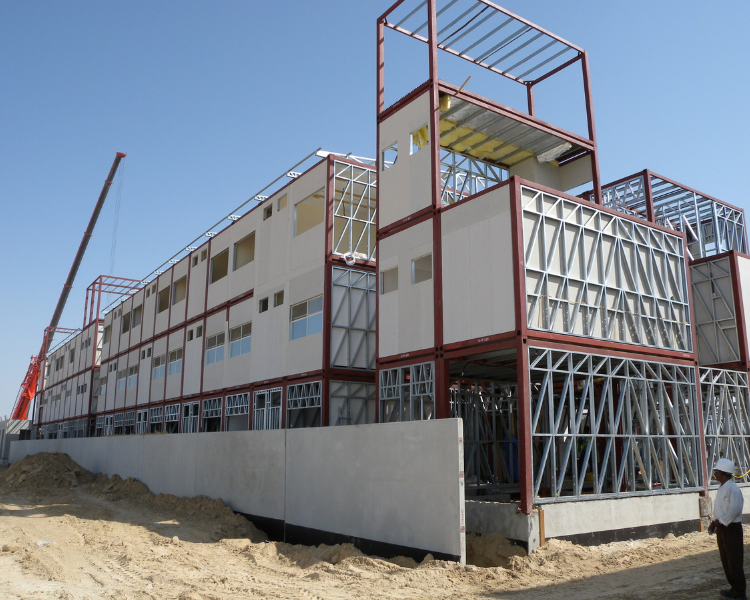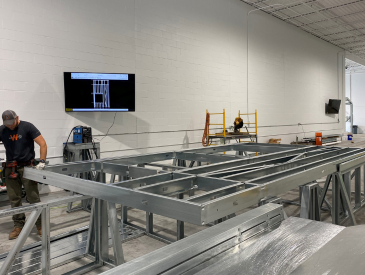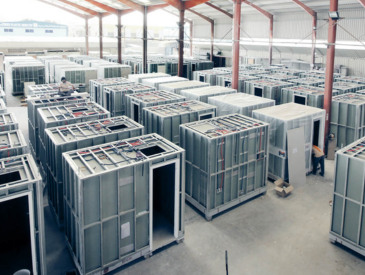Introduction
Residential developers are always looking for new ways to simplify the construction process. Offsite construction, prefabrication and modular construction are often considered.
While they may seem interchangeable at first glance there are subtleties between them. This article aims to provide a clear understanding of these differences and how each method can contribute to the future of US residential construction.

Offsite Construction
Offsite construction is a broad term that encompasses any construction activity that takes place away from the final building location. It includes both prefabrication and modular construction.
Essentially, offsite construction strives to optimize productivity by transferring specific construction activities to controlled environments, fostering a more streamlined and effective approach.
Key characteristics of offsite construction:
Centralized Fabrication
Components or entire building modules are constructed in a controlled facility.
Enhanced Quality Control
Factory conditions allow for stringent control measures, ensuring consistency and precision in each component.
Reduced Onsite Labor
With elements prefabricated offsite, onsite labor primarily focuses on the assembly, reducing the reliance on skilled labor and mitigating site-related risks.
Time Efficiency
Simultaneous onsite and offsite work accelerates the construction timeline, reducing overall project duration.
Reduced Material Waste
Precise manufacturing processes minimize material waste, contributing to a more sustainable construction approach.
Prefabrication
Prefabrication is a method within the broader umbrella of offsite construction. It involves manufacturing building components or modules in a factory setting and then transporting them to the construction site for assembly. This method offers a middle ground between traditional onsite construction and fully modular construction.
 |
|
Key characteristics of prefabrication:
Standardized Components
Prefabricated elements are often standardized for efficiency, but customization is still possible within the defined parameters.
Transportation Efficiency
Finished components are transported to the site for assembly, reducing transportation costs and minimizing environmental impact.
Adaptability
Prefabrication allows for a degree of adaptability to suit unique project needs while maintaining the benefits of offsite construction.
Design Flexibility
Prefabricated elements can be customized to suit specific design requirements, providing flexibility without compromising efficiency.
Cost Savings
Time savings, reduced labor costs and controlled manufacturing processes contribute to overall cost savings.
Modular Construction
Modular construction takes prefabrication to the next level and involves the fabrication of entire building modules offsite, including plumbing, electrical systems and finishes. These modules are then transported to the construction site and assembled to create a complete structure.
 |
.png?width=365&height=275&name=modular2%20(1).png) |
Key characteristics of modular construction:
Complete Modules
Entire sections of a building, or even entire floors, are constructed as standalone modules in a factory.
Transportable Units
Modules are transported to the site and assembled into the final structure, significantly reducing onsite construction time.
Scalability
Modular construction is highly scalable, making it suitable for a range of residential construction projects, from single-family homes to multi-story apartment buildings.
Rapid Assembly
With much of the construction occurring simultaneously in the factory and onsite, modular construction significantly reduces project timelines.
Cost Efficiency
Efficient use of resources, reduced labor requirements and minimized waste contribute to cost-effective construction.
Design Consistency
Modules are built to precise specifications, ensuring uniformity and consistency across the entire development.
Summary
In the realm of offsite construction, we have explored the differences between prefabrication & modular construction and the unique advantages that each offer. Offsite construction optimizes efficiency and standards through centralized fabrication, while prefabrication balances standardization with customization. Modular construction takes this a step further, offering complete transportable units for rapid onsite assembly. By understanding the distinctions between these methodologies, US residential developers can make informed decisions that align with their project goals, timelines and budgets, paving the way for a more innovative and sustainable future in the construction industry.
Discover more in our residential eBook.








